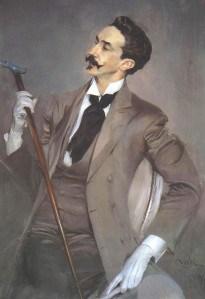 Formal clothing options have always been geared towards one particular choice for men - the suit. On first impressions, many people would argue that the suit is a rather plain and boring piece of attire. However, its long and fascinating history says otherwise. From the initial concept of court dress in the 17 th century through to the slick metrosexual styles of the 2000s, the suit has seen many styles and changes throughout its history and is likely to see many more. We take a look at the development of the suit and at what the future may hold for it.
Formal clothing options have always been geared towards one particular choice for men - the suit. On first impressions, many people would argue that the suit is a rather plain and boring piece of attire. However, its long and fascinating history says otherwise. From the initial concept of court dress in the 17 th century through to the slick metrosexual styles of the 2000s, the suit has seen many styles and changes throughout its history and is likely to see many more. We take a look at the development of the suit and at what the future may hold for it.
Where it all started
The suit has its origins in the royal courts of England in the 17 th century. The fashion of the time was excessive and flamboyant, usually involving huge furs and heavy robes which were highly impractical, particularly as the country was experiencing a spate of national disasters. The disproportionate splendor of the court dress seemed excessive and unnecessary. So, King Charles II enforced a new style of pared-down dress for his courtiers which included waistcoats, cravats, frock coats, hats, and breeches. This style became the blueprint for the suit of the modern world.
Frock coats of the Victorian era
The dawning of the industrial revolution brought with it the awareness that style was a huge factor in obtaining social status. Thus, a new style arose which was easily mimicked by the middle and lower classes. The frock coat began the Victorian era as a black coat which reached the knees, similar to modern-day overcoats. However, this coat split into two distinct styles. One style was the morning suit, which featured a top hat and tails. The other was the lounge suit, which did not have tails and was more informal. Both usually used long shirts that needed a lot of tucking in.
The lounge suites of the Edwardian era
Up until the 1900s, the lounge suit had been considered something of a casual, informal way of dressing that was usually reserved for outdoor occasions. However, during the Edwardian era, the lounge suit took on a slightly more formal quality. Lighter fabrics were used in the construction of the garment, trousers were matched to the jacket, and waistcoats added another layer of warmth and style.
Birth of the modern suit

The 1930s ushered in a new style featuring a heavy drape cut with wide shoulders and high-rise trousers. This style was to set the scene of the suit for the modern age. The heavy fabric draped well and didn't crease easily, and the overall finish was much more refined than previous styles. The 1940s saw an age of constructed tailoring and design minimalism influenced heavily by the rationing of fabrics, while the glamour of the 1950s saw a return of Edwardian styles on Teddy boys and wider pleated trousers seen on the Beat Generation.
Pop culture in the 1960s brought about a new "mod" style that featured skinny-fit suits, drainpipe trousers, and collarless jackets. But the dawn of the disco age in the 1970s turned the volume up to the maximum as flamboyance became the order of the day. Oversized collars and lapels, crazy colors, and big shoes were seen on the most famous names in the world.
Deconstruction was big news in the 1980s, with soft fabrics, unstructured jackets, and slouchy silhouettes quickly becoming the preferred style. The 1990s brought in a minimalistic approach that featured skinny ties and slim-fit suits.
Metrosexual styles of the 2000s
As the focus began to turn towards men taking care of their appearances, sales of skincare and hardcore products soared, and suits became a form of expression for men's flamboyant and hedonistic sides. Luxury fabrics came into play, with velvets and embossed embroidery which highlighted their individual characteristics and personalities.
Suits became commonplace at sporting events, demonstrating the shift in attitudes towards self-care. While games such as football and poker had traditionally attracted comfortable loungewear, the change in health trends and clean eating was reflected in the clothing styles, and the dapper trend started springing up at poker tables and on the sidelines at football matches.
Suits for the future
The last couple of decades have seen retrosexual styles and super fun experimental styles making waves in the fashion industry, but what is next for the suit? More color, more style, more out-of-the-box thinking seems to be the order of the day. We can't wait to see what happens next in the world of suit fashion.
There's no doubt the suit has come a long way since its conception. It's not quite as dull as you might think!
Fraquoh and Franchomme
Further reading:
A History of the Suit: Part 1: 1900s - 1950s A History of the Suit: Part 2: 1960s - Mid 2010s 12 Essential Suit Rules The Different Types of Suit Fits Can You Wear a Backpack with a Suit?P.S. We want to hear from you! Which era of the suit is your favorite? Why? What do you think the future will hold for suits? Share your feedback, questions or thoughts in the comments below! For more articles on style, fashion tips and cultural insights, you can subscribe to Attire Club via e-mail or follow us on Facebook, Twitter or Instagram!

